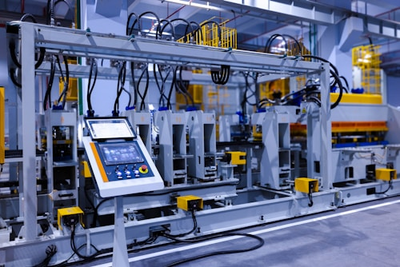The Seven Wastes
Waste.
In manufacturing, it’s anything that does not directly contribute to creating value, and unfortunately it’s everywhere. While some wastes are unavoidable (for now), once you are building your product, the number one enabler for your success will be your ability to identify and eliminate waste from your operation.
To to so, it’s helpful to group the main sources of waste for easy identification - enter the storied “7 Wastes” from Toyota.
#Overproduction
Making more product than your customer wants. Not only will you still have to pay for it, but it also generates all of the other wastes listed below. You know if you are overproducing (or are susceptible to overproduction) if processes are running faster than takt time.
#Waiting
Twiddling your thumbs. You may be waiting for parts to arrive, for a tool, or for the next step to complete if you are in an unbalance line. It also doesn’t have to be a person waiting, but it could be product or inventory waiting to be processed. Waiting means you are paying for resources that you aren’t using, and you might as well be lighting your money on fire. Common ways to fix it are to level-load work content, address bottlenecks, or break up inventory replenishment into smaller chunks (depending on the cause of the wait).
#Transportation/Conveyance
“You’re telling me it’s wasteful to ship my inventory to my customer? That’s insane - I have to do it!”. You’re right, but just because you have to do it doesn’t mean it’s adding value. For an extreme example, if you had to ship your product to your next-door neighbor to the East, which way should you go? Straight East, or West - you’ll ultimately arrive at the same place, right? Yes, but the latter would be ridiculously wasteful. This is a great example of something that can be a necessary waste - you can’t avoid moving your product and inventory around both within your factory walls and outside of them, but you should look at how you are doing so and make sure to eliminate any unnecessary transportation.
#Overprocessing
Doing more to a product than the customer (or next step) requires or is willing to pay for. This can manifest in excessive paperwork, or in exceeding quality specs that a customer doesn’t actually care about. For instance, if you are selling nails, will the customer be willing to pay for you to polish them to a mirror finish? Likely not, and while they may look prettier and may seem like “higher quality”, in reality this is just wasteful.
#Inventory
“Wait, this is a waste? It’s an asset on my balance sheet!” Yes it’s an asset, but building up inventory reduces inventory turns, drives up working capital requirements, hides defects (if a process goes out of whack but it’s producing parts into an inventory pile, it’s going to take a while before you realize you have an issue - and they you either have to throw out all of that production or expend more resources to fix it - not good). You should do everything you can to minimize inventory in your system to help drive up profitability.
#Motion
The difference between being busy and being productive. If an operator has to walk back and forth 20 times during a 10 minute process to get tools and parts, most of that 10 minutes is going to be waste - no value is being added to the product during the time that an operator is walking around. Re-ordering your work cell to minimize this motion will help you eliminate wasteful activity from your process and better balance your system to increase productivity - and profitability.
#Defects
It’s obvious that a defect is wasteful, what’s not obvious is that each defect essentially costs you 3 units - the defect itself, the unit you build to replace the defect, and the unit you lost by having to re-build. Driving quality into your process to eliminate defects is critical, because - like overproduction - losses due to quality cause an outsized impact on the profitability of your system.
You can dig in more to this topic over at Lean.org, or with further study of the Toyota Production System (where waste will often be termed the Japanese “muda”).



